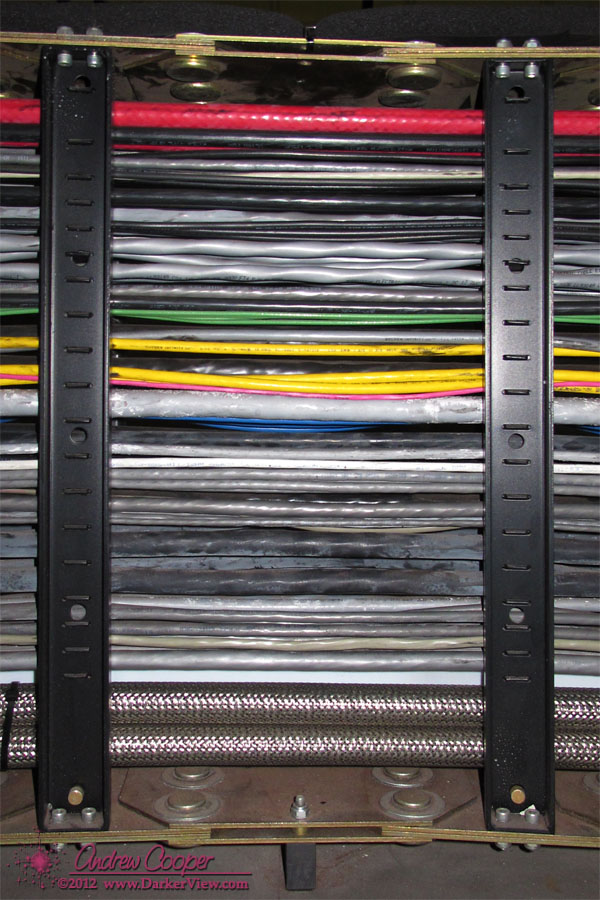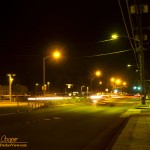
A Thin Moon and Mercury
Tomorrow morning a thin Moon will join Mercury in the dawn. The 4.6% illuminated Moon will be a bit under 6° from the planet, with the planet closer to the sunrise. The pair will be over 15° above the horizon at sunrise.
Mars, Saturn and Spica
Mars will pass between Saturn and Spica this evening. Currently moving in retrograde, the red planet will be directly between the ringed planet and the star. All three will be close to 1st magnitude. Saturn and Spica are currently about 4.5° apart. Mars will be just under 2° from the star.
The trio will be close for a couple weeks. On the 21st a thin crescent Moon, 24% illuminated, will join to create a very nice quartet.
The Moon and Venus
Tomorrow morning, August 13th, the Moon and Venus will meetup for a nice conjunction. Separated by only 1°17′ the pair will be a nice match. The Moon will show about 16% illumination compared with Venus at -4.3 magnitude. A telescopic view of the planet will show that Venus is also at a partial phase, about 50% illuminated.
Viewers further north will be able to witness an occultation, Venus will slide behind the Moon during the middle of the day when high in the sky.
Jupiter will be about 22° west, higher in the sky. While Mercury is still visible just ahead of the rising Sun.
Postcard from the Summit – Azimuth Wrap
The massive set of cables going into the telescope must twist as the telescope rotates. Besides cables there are also hoses to carry high pressure oil, glycol coolant and compressed air. To accommodate the rotation, these cables and hoses go through a large assembly called the Azimuth Wrap. Looking a bit like an oversize bicycle chain with cable laced through the links, the wrap insures the cable does not kink, tangle or stretch as the telescope sweeps back and forth.
Lacing new cable through the wrap is an intricate task of threading through the metal comb that supports the cables in each link. See the little pink one in the middle, just did that…

The Moon and Jupiter
Tomorrow morning, August 11th, will see the Moon quite close to Jupiter. The pair will be a mere 2° apart. A bright Jupiter at -2.2 magnitude will be a nice match for a 33% illuminated Moon.
An even brightener Venus will be located about 22° east of Jupiter, closer to the horizon. You could also look for Mercury, 28° east of Venus and 16° above the horizon at sunrise.
In two more days, on the morning of August 13th, the Moon will rendezvous with Venus, for a closer conjunction, only 1° away from the planet.
A Line of Planets in the Dawn
A line of bright planets will grace the dawn sky over the coming week. While Mercury has passed maximum elongation and is now headed back into the Sun’s glare, it is still 16° above the horizon at sunrise. Well above Mercury the brilliant Venus is hard to miss, 44° above the horizon at sunrise. Even higher in the sky is Jupiter, at about 67° elevation at sunrise.
Tomorrow morning will see a crescent Moon in the lineup, about 40% illuminated and above Jupiter. Over the next 7 days the Moon will work its way along the line, waning ever thinner as it goes. On the 11th the Moon will be under 2° above Jupiter, On the morning of the 13th the Moon will be very close to Venus, just over 1° away.
New LED Streetlights for the Big Island
The changeover is inevitable. LEDs are the most power-efficient commercially available light source. Their longer lifetimes, greater light-per-watt and lower installation costs make it only a matter of time before most light sources in the world are LED. The fixtures and bulbs are still notably more expensive, but that’s offset by lower energy usage and longer lifetimes.

Streetlights consume an enormous amount of the power generated across the globe. Here in the islands, where power is more expensive than much of the nation, the power savings make LED streetlights very attractive. As Hawai’i County taxpayers this is something that we should all be concerned with, we pay the power bill for the thousands of streetlights across the island.
The best competing technology is low pressure sodium (LPS). It is this streetlight technology that is currently used throughout Hawai’i. LPS emits all of its light at a single wavelength, 589nm, a golden yellow. Many people dislike the yellow color, and it can be confused with the yellow of a changing intersection signal. The large LPS bulbs are difficult to design fixtures around, resulting in lamps that throw light in all directions, not just where needed. As a result, many LPS fixtures create a lot of glare for drivers and surrounding homes and businesses.
LPS lights do have advantages, of course. They are quite power efficient, emitting all the light near the peak sensitivity of the human eye. Astronomers prefer the light of LPS lamps, as the single wavelength can be easily filtered or simply ignored when seen in their data. Between the power savings and the astronomy friendly aspects, LPS had been the outdoor lighting of choice across the state. The result is the familiar golden glow above any urban area in the islands.
But change is coming, with LEDs already beginning to replace LPS streetlights. Hawai’i County has planned for some time to convert to LED technology and evaluation of the new lamps has been going on at several test locations. With the success of those tests more widespread deployment is just beginning. This last month the new LED streetlights were installed around the town of Waimea. For many this is the first chance to see the new lights in place.
The recent conversion allowed an opportunity to compare the new with the old. Taken midway through the change out, the photo shows the new lights down the right side of the street, while the older low pressure sodium lights have yet to be replaced on the left side of the street. In order to faithfully reproduce the scene, the photo was taken in raw mode with daylight white balance used to produce the image shown.
The new lights are dramatically better than the old, unshielded LPS lights. Because of their vastly reduced glare, you simply do not see the lights themselves from any distance. Even nearby the lights do not produce the distracting glare of the older designs. Note, also, that all of the older LPS lights create yellow halos of glare in the photo, all the way down the street. While the new LED lights become hard to see once you are out from underneath the light. In the photo, the third LED light from the camera is just seen and the fourth is hard to pick out.
The improvement is immediately noticeable while driving the main street of Waimea. The LED lights are difficult to see directly, while the light provided on the roadway is just as good if not better than the older LPS fixtures. This is a street that has substantial pedestrian traffic and other vehicles pulling in and out of the many businesses, so good visibility is critical for safety.
The comparison here is not completely fair. The low pressure sodium fixtures used on much of the island, including Waimea are poor examples of modern lighting design. Well-designed low pressure sodium fixtures would compare somewhat more favorably. Still, LED’s are easier light sources to design a decent fixture around because LED’s are nearly point sources, not a large gas tube. Designing a good reflector and a decent cutoff shield is quite difficult for low pressure sodium bulbs.
One advantage of the better light design is reduced “light trespass.” That means less light shining onto areas where it is not needed. Directing the light properly onto the roadway means less light shining into the windows of adjacent homes, or upwards to light the sky and outwards to confuse birds or sea turtles.
Additionally, the new LED lamps installed on the island have specially designed blue cutoff filters. This is critical for the observatories. White LED lights use a blue or violet LED to excite a phosphor that converts the blue light to a white light. After the conversion a large amount of this blue light leaks through the phosphor. It is this blue light that is most troubling to astronomers because it readily scatters in air, an effect called Rayleigh scattering. This is the same effect that makes the sky blue during the day. The sky is naturally darker in the blue region of the spectrum, thus any light pollution at this wavelength creates a larger impact on astronomy. The special filters, therefore, keep the LED lamps from backfiring and creating more light pollution.
So far Hawai’i County’s conversion to LED lights is just beginning. One thousand lamps were ordered, and only a handful have been installed so far, mostly near intersections. While we hope that the effects improve safety, reduced light pollution, and reduced power bills, it will be some time before we see the real impact of the new lights and have a chance to measure the changes.
Divided
Mars, Saturn and Spica
Mars is fast approaching a rendezvous with both Saturn and Spica this week. Currently moving in retrograde, the red planet will pass between the ringed planet and the star. All three will be close to 1st magnitude. Saturn and Spica are currently about 4.5° apart. Mars will pass directly between the two on the 13th, just under 2° from the star.
The trio will be close for a couple weeks. On the 21st a thin crescent Moon, 24% illuminated, will join to create a very nice quartet.

